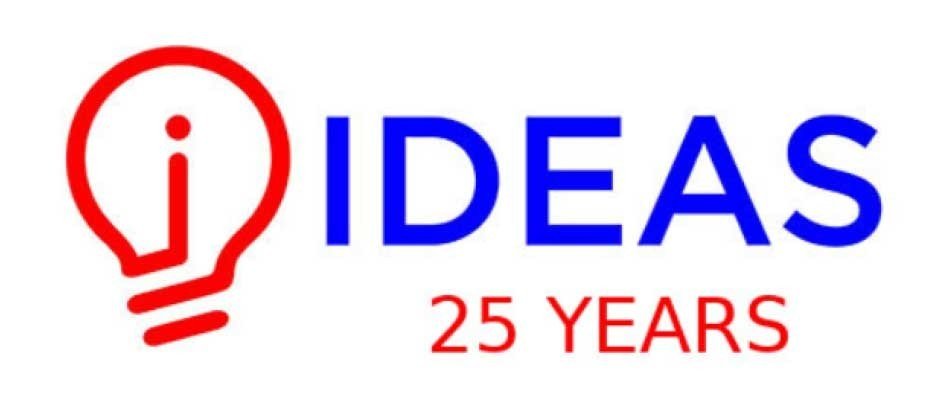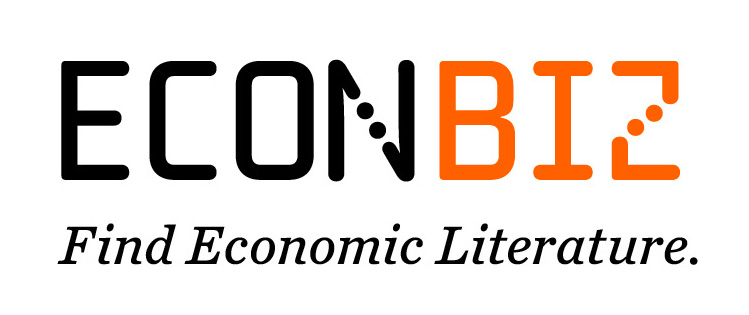| ISSN | 2615-9813 |
| ISSN (số cũ) | 1859-3682 |
Số 231 | Tháng 6/2025
Thuế và nhập khẩu của Hoa Kỳ với Việt Nam: Một phân tích thực nghiệm và mô phỏng Monte Carlo
Nguyễn Đức Trung, Nguyễn Anh Tú
Tóm tắt:
Nghiên cứu này sử dụng dữ liệu giai đoạn 1994–2024 nhằm đo lường tác động của thuế nhập khẩu bình quân đối với giá trị nhập khẩu vào thị trường Hoa Kỳ từ hàng hóa Việt Nam thông qua mô hình trọng lực. Ngoài ra, để ước lượng kết quả một cách vững chắc hơn trong điều kiện dữ liệu hạn chế, nghiên cứu áp dụng mô phỏng Monte Carlo nhằm đánh giá khả năng sụt giảm nhập khẩu từ Hoa Kỳ khi thuế quan dao động theo các kịch bản cho trước từ 10% tới 46%. Kết quả ước lượng cho thấy độ co giãn về giá trị nhập khẩu hàng hóa với thuế quan ở mức tỷ lệ 1:-0,83. Trong khi đó, kết quả mô phỏng Monte Carlo cho thấy nếu thuế đối ứng của Hoa Kỳ áp với hàng hóa Việt Nam ở mức 46% thì có 52% khả năng nhập khẩu vào Hoa Kỳ sẽ giảm trên 30% trong năm 2025. Từ các kết quả ước lượng thực nghiệm và mô phỏng, nghiên cứu đề xuất những khuyến nghị chính sách nhằm giảm tác động ngược chiều của thuế quan với nhập khẩu.
Tài liệu tham khảo:
- Amiti, M., Redding, S. J., & Weinstein, D. E. (2019). The impact of the 2018 tariffs on prices and welfare. Journal of Economic Perspectives, 33(4), 187-210. Doi:10.1257/jep.33.4.187.
- Anderson, J. E. (2011). The gravity model. Annu. Rev. Econ., 3(1), 133-160. Doi:10.1146/annurev-economics-111809-125114.
- Anderson, J. E., & Van Wincoop, E. (2003). Gravity with gravitas: A solution to the border puzzle. American economic review, 93(1), 170-192. Doi:10.1257/000282803321455214.
- Antras, P., & Helpman, E. (2004). Global sourcing. Journal of political Economy, 112(3), 552-580.
- Athukorala, P.-c., & Yamashita, N. (2006). Production fragmentation and trade integration: East Asia in a global context. The North American Journal of Economics and Finance, 17(3), 233-256. Doi:10.1016/j.najef.2006.07.002.
- Baier, S. L., & Bergstrand, J. H. (2007). Do free trade agreements actually increase members' international trade? Journal of International Economics, 71(1), 72-95. Doi:10.1016/j.jinteco.2006.02.005.
- Baldwin, R., & Lopez‐Gonzalez, J. (2015). Supply‐chain trade: A portrait of global patterns and several testable hypotheses. The world economy, 38(11), 1682-1721. Doi:10.1111/twec.12189
- Bhagwati, J. (1968). More on the Equivalence of Tariffs and Quotas. The American Economic Review, 58(1), 142-146.
- Binh, N. N., & Haughton, J. (2002). Trade liberalization and foreign direct investment in Vietnam. ASEAN economic bulletin, 302-318. Doi:10.1355/AE19-3E.
- Bloom, N. (2009). The impact of uncertainty shocks. Econometrica, 77(3), 623-685. Doi:10.3982/ECTA6248.
- Bown, C. P., & Irwin, D. A. (2019). Trump’s assault on the global trading system. Foreign Affairs, 98(5), 125-137. Doi:10.1093/oso/9780190086350.003.0005.
- Brandimarte, P. (2014). Handbook in Monte Carlo simulation: Applications in financial engineering, risk management, and economics: John Wiley & Sons.
- Broda, C., & Weinstein, D. E. (2006). Globalization and the Gains from Variety. The Quarterly Journal of Economics, 121(2), 541-585. Doi:10.1162/qjec.2006.121.2.541.
- Caldara, D., Iacoviello, M., Molligo, P., Prestipino, A., & Raffo, A. (2020). The economic effects of trade policy uncertainty. Journal of Monetary Economics, 109, 38-59. Doi:10.1016/j.jmoneco.2019.11.002.
- Carter, C. A., & Steinbach, S. (2020). The impact of retaliatory tariffs on agricultural and food trade. Doi:10.3386/w27147.
- Chen, N., & Novy, D. (2022). Gravity and heterogeneous trade cost elasticities. The Economic Journal, 132(644), 1349-1377. Doi:10.1093/ej/ueab067.
- Conte, M., Cotterlaz, P., & Mayer, T. (2022). The CEPII gravity database.
- Dornbusch, R., Fischer, S., & Samuelson, P. A. (1977). Comparative advantage, trade, and payments in a Ricardian model with a continuum of goods. The American Economic Review, 67(5), 823-839.
- Fajgelbaum, P. D., Goldberg, P. K., Kennedy, P. J., & Khandelwal, A. K. (2020). The return to protectionism. The Quarterly Journal of Economics, 135(1), 1-55. Doi:10.1093/qje/qjz036.
- Feenstra, R. C. (1995). Estimating the effects of trade policy. Handbook of international economics, 3, 1553-1595. Doi:10.1016/S1573-4404(05)80010-3.
- Handley, K., & Limão, N. (2017). Policy uncertainty, trade, and welfare: Theory and evidence for China and the United States. American economic review, 107(9), 2731-2783. Doi:10.1257/aer.20141419.
- Head, K., & Mayer, T. (2014). Gravity equations: Workhorse, toolkit, and cookbook. In Handbook of international economics (Vol. 4, pp. 131-195): Elsevier.
- Jones, R. W. (1965). The structure of simple general equilibrium models. Journal of political Economy, 73(6), 557-572. Doi:10.1142/9789813200678_0004.
- Krugman, P. R., & Obstfeld, M. (2009). International economics: Theory and policy: Pearson Education.
- Lederman, D., Maloney, W. F., Maloney, W. F., & Serven, L. (2005). Lessons from NAFTA: for Latin America and the Caribbean. Doi:10.1596/0-8213-5813-8.
- Looi Kee, H., Nicita, A., & Olarreaga, M. (2009). Estimating trade restrictiveness indices. The Economic Journal, 119(534), 172-199. Doi:10.1111/j.1468-0297.2008.02209.x
- Martin, M. F. (2014). US-Vietnam Economic and Trade Relations: Issues for the 111th Congress. In: Congressional Research Service.
- Melitz, M. J. (2003). The impact of trade on intra‐industry reallocations and aggregate industry productivity. econometrica, 71(6), 1695-1725. Doi:10.1111/1468-0262.00467.
- Nguyen, D. X. (2016). Trade liberalization and export sophistication in Vietnam. The Journal of International Trade & Economic Development, 25(8), 1071-1089. Doi:10.1080/09638199.2016.1179778.
- Nicita, A. (2019). Trade and trade diversion effects of United States tariffs on China. UNCTAD Research Paper No. 37. UNCTAD/SER.
- Petri, P. A., Plummer, M. G., & Zhai, F. (2012). The Trans-pacific partnership and Asia-pacific integration: a quantitative assessment (Vol. 98): Peterson Institute.
- Pierce, J. R., & Schott, P. K. (2016). The surprisingly swift decline of US manufacturing employment. American economic review, 106(7), 1632-1662.
- World Integrated Trade Solution. (2025). United States Imports, Tariffs by country and region. Retrieved from: https://wits.worldbank.org/CountryProfile/en/Country/USA/Year/2022/TradeFlow/Import.
The Import Tariffs and the Import Volumes Nexus: A Case Study of US-Vietnam from Gravity Model and Monte Carlo Simulation
Abstract:
This study utilizes data 1994-2024 to examine the impact of import tariffs on the value of Vietnamese goods imported into the US market through by the Gravity model. Moreover, to improve the confidence of estimation under limited data, the study applies Monte Carlo simulation to assess the possibility of a decline in imports into the US when tariffs fluctuate based on given scenarios from 10% to 46%. The estimated results show that the elasticity of tariffs is at the rate of 1:-0.83. Meanwhile, the Monte Carlo results indicate that if the US reciprocal tariff on Vietnamese goods is set at 46%, there is a 52% possibility that imports into the US will decrease by more than 30% in 2025. Based on the empirical and simulation results, the study proposes suggestions to reduce the negative impact of tariffs on imports.







